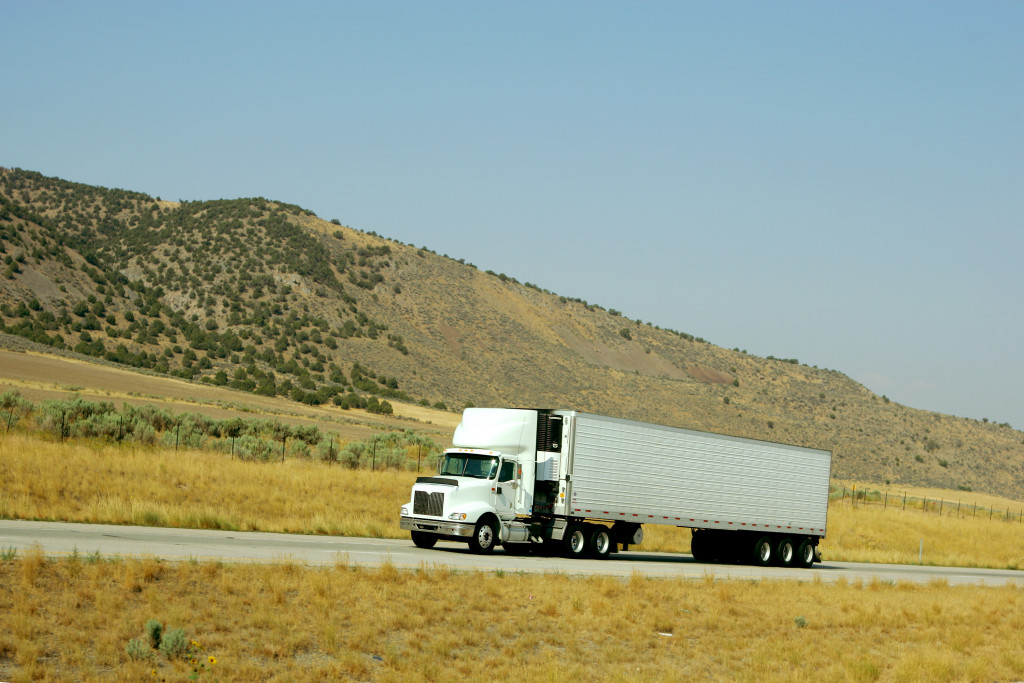In many children’s toy collections, there is a semitruck or what is often referred to as an 18-wheeler or a tractor-trailer. The term semitruck refers to its towing a semitrailer with only rear wheels. The front of the trailer relies on the rear wheels of the truck.
A semitruck is not a lesser truck. Mostly categorized as Class 8 vehicles, they can carry loads that are more than 26,000 pounds. Semitrucks weigh between 15,000 to 18,000 pounds. Hence, the loads they carry are usually limited only by the load limits of the roads they run on, usually at 80,000 pounds.
Semitrucks are central to the supply chain, delivering various products from food to fuel and other vehicles. Hence, even during the pandemic, they were on roads to ensure that food and other essentials are available to the public.
Types of Semi Trucks and Trailers
There are two kinds of semitrucks depending on their use. The day cab is an ordinary semitruck used when the delivery is for short distances only and the driver goes home after the shift.
The sleeper cab is used for deliveries that require driving for several days or even a week, with periods of rest parking at truck stops. Truck stops provide bathrooms, convenience stores, and eateries. The sleeper cab includes a bedroom in the truck. Some include a bed and other amenities like a smalls refrigerator, a microwave oven, and a television set.
Semi-trucks are also categorized as flat roof, mid-roof, or high-roof. Flat roof semitrucks have an interior height of only five feet and are used for short-distance deliveries. Sleeper cabs are either mid-roof with six feet and nine inches of headroom or high-roof with eight feet of vertical space inside.
Semitrucks pull different types of trailers. Dry van trailers carry container vans. Refrigerated vans, also called reefers, look similar to dry vans but carry food that needs to stay chilled or frozen. Tankers can carry liquids like oil or dry loads such as grain. They can be loaded from the top, back, or bottom. Flatbed trailers are open and carry items that do not fit in an enclosed van. Car haulers carry various types of vehicles to dealerships.

Best Engines for Semi Trucks
In Smart Trucking’s list of the 10 best engines for semitrucks, five are from Caterpillar. Although the company stopped manufacturing truck engines in 2010, their engines are still in the market and Cat engine parts are still available. The Cat models listed were 1693, 380, C15, C16, and 3408. All are powerful and reliable. All have good fuel economy except for the 3408. The warranties of the C15 and the C16 are great.
Cummins had two engine models in the top 10, the Big Cam and the 350. Both are reliable but do not have good fuel economy. Detroit also had two models on the list, the 60 Series and the DD. They are newer diesel engines compared to others, with good emission systems. The Mack 300 HP is tough and reliable.
High Demand for Used Semi Trucks
Because of the shortage of raw materials used in vehicle production, there is a shortage of new semitrucks on the market. This has increased the demand for used semitrucks. Even in the secondary market, younger trucks used for one to two years are not available.
In March 2021, the average semitruck sleeper sold at $57,489 had been used for 68 months with 458,197 mileage. This price was 30 percent higher than what it would have sold for in March 2020. Because of limited availability and high prices, truck fleets that usually trade in their vehicles for younger used models are now extending their trade cycles and holding on to their trucks.
The Future: Autonomous Semi Trucks
TuSimple stated that it would have autonomous or self-driving semitrucks available for the market by 2024. Customers have already reserved more than 5,700 units. The autonomous trucks are marketed to drive the middle mile. Truck drivers will deliver the load on traditional vehicles to a site just before the highway, where it will be transferred to the autonomous vehicle. The autonomous vehicle will navigate the entire highway up to a terminal near the interstate exit. The load is again transferred, and a traditional driver takes over the last leg of the journey to the destination.
The setup ensures that the autonomous vehicle navigates on the highway where conditions are more regulated. The human drivers take on routes that require more human decision-making. Highway driving can also take days, and the autonomous vehicle will not require stops to eat, go to the bathroom, and sleep. It saves time and lowers costs while sparing drivers extended drives which have health risks.







